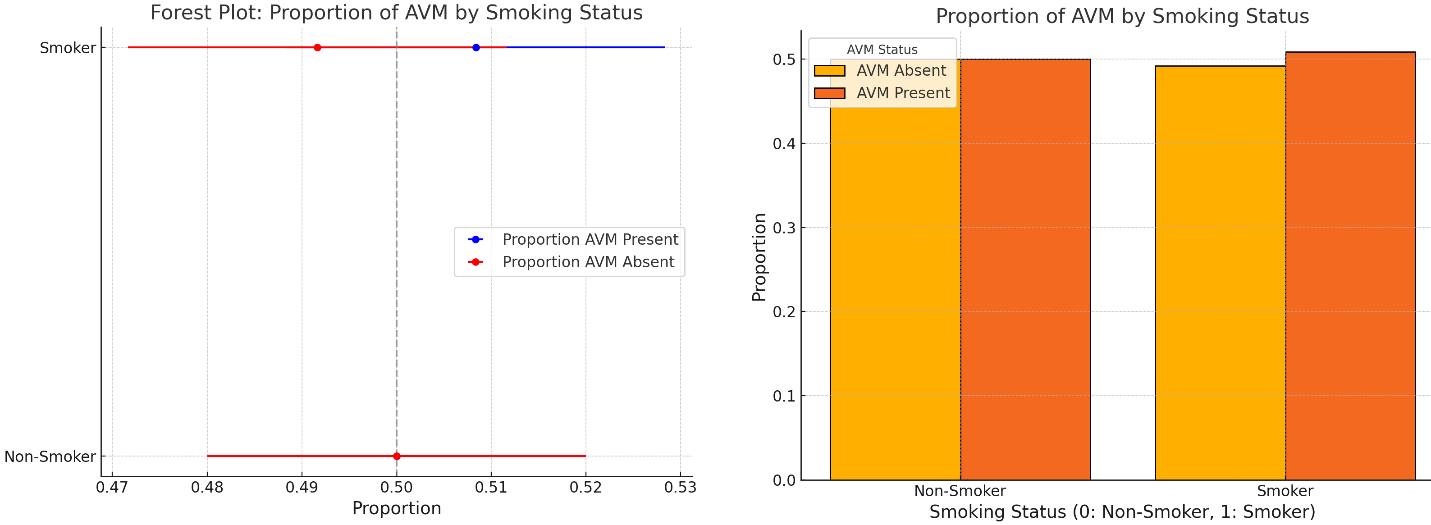Sunday Poster Session
Category: Colon
P0314 - Lighting the Fuse: Uncovering the Vascular and Intestinal Risks of Smoking in a Nationwide Study

Dilman Natt, MD
Nassau University Medical Center
East Meadow, New York
Presenting Author(s)
Nassau University Medical Center, East Meadow, NY
Introduction:
This investigation utilizes the Healthcare Cost and Utilization Project (HCUP) National Database to explore the relationship between smoking and the prevalence of arteriovenous malformation (AVM) and diverticulitis. Spanning hospital admissions from 2019 to 2024, the study focuses on a significant cohort of 2,858,576 adults. By analyzing data retrieved via ICD codes, this research aims to elucidate whether a statistically significant link exists between tobacco usage and increased incidence rates of these conditions, contributing to the broader understanding of smoking-related health risks.
Methods:
This study analyzed hospital admissions from 2019 to 2024 using the Nationwide Admission Database (HCUP), focusing on 2,858,576 adults. The main objective was to determine whether smoking increases the incidence of arteriovenous malformation (AVM) and diverticulitis. Using ICD codes, data were extracted from the national database, and a specific subset of 92,483 individuals was selected to explore the relationship between smoking and the occurrence of AVM and diverticulitis. Both smoking status and the presence of AVM were recorded as binary variables. To evaluate the significance of the observed association between smoking and AVM incidence, a Chi-squared test of independence was performed.
Results:
The analysis assessed the relationship between smoking and the incidence of arteriovenous malformation (AVM) in a cohort of 92,483 individuals consisting of 50,939 smokers (55.1%) and 41,544 non-smokers (44.9%). Of these, 46,668 individuals (50.5%) were diagnosed with AVM, while 45,815 (49.5%) were not. A Chi-squared test indicated a statistically significant association between smoking and the presence of AVM (p = 0.025, df = 1). The results suggest that smokers may be at a slightly higher risk of developing AVM and diverticulitis compared to non-smokers.
Discussion:
The findings from this study demonstrate a statistically significant association between smoking and increased incidence of AVM, as evidenced by the analysis of data from 92,483 individuals in the HCUP National Database. This correlation suggests potential pathophysiological mechanisms where smoking could exacerbate or contribute to the development of AVM and diverticulitis. These results necessitate further investigation into how smoking influences vascular and digestive system health, with implications for public health policies aimed at reducing smoking rates.
Figure: Intestinal Risks of Smoking
Disclosures:
Dilman Natt indicated no relevant financial relationships.
Rajmohan Rammohan indicated no relevant financial relationships.
Achal Patel indicated no relevant financial relationships.
Sai Reshma Magam indicated no relevant financial relationships.
Sindhuja Giridharan indicated no relevant financial relationships.
Leeza Pannikodu indicated no relevant financial relationships.
Amilcar Guaschino indicated no relevant financial relationships.
Amina Zafar indicated no relevant financial relationships.
Venkata Panchagnula indicated no relevant financial relationships.
Sri Harsha Boppana indicated no relevant financial relationships.
Wing Hang Lau indicated no relevant financial relationships.
Cesar Orlando Ortiz Bernard indicated no relevant financial relationships.
Paul Mustacchia indicated no relevant financial relationships.
Dilman Natt, MD, Rajmohan Rammohan, MD, Achal Patel, MD, Sai Reshma Magam, MD, Sindhuja Giridharan, MD, Leeza E. Pannikodu, MD, Amilcar Guaschino, MD, Amina Zafar, MD, Venkata Panchagnula, MD, Sri Harsha Boppana, MD, Wing Hang Lau, DO, Cesar Orlando Ortiz Bernard, MD, Paul Mustacchia, MD. P0314 - Lighting the Fuse: Uncovering the Vascular and Intestinal Risks of Smoking in a Nationwide Study, ACG 2025 Annual Scientific Meeting Abstracts. Phoenix, AZ: American College of Gastroenterology.
